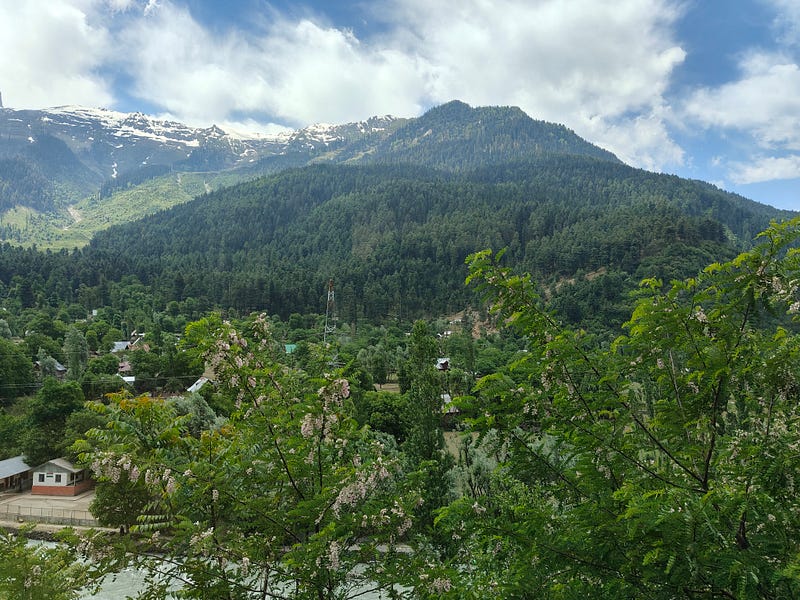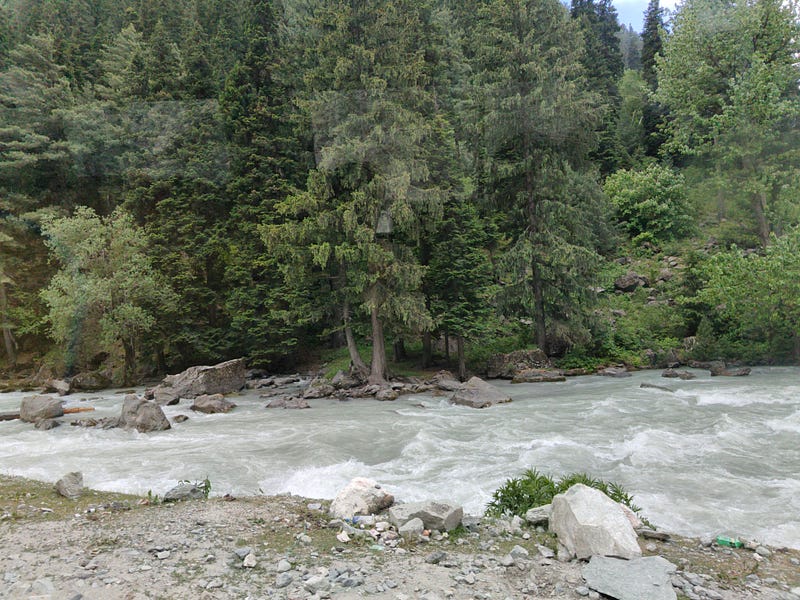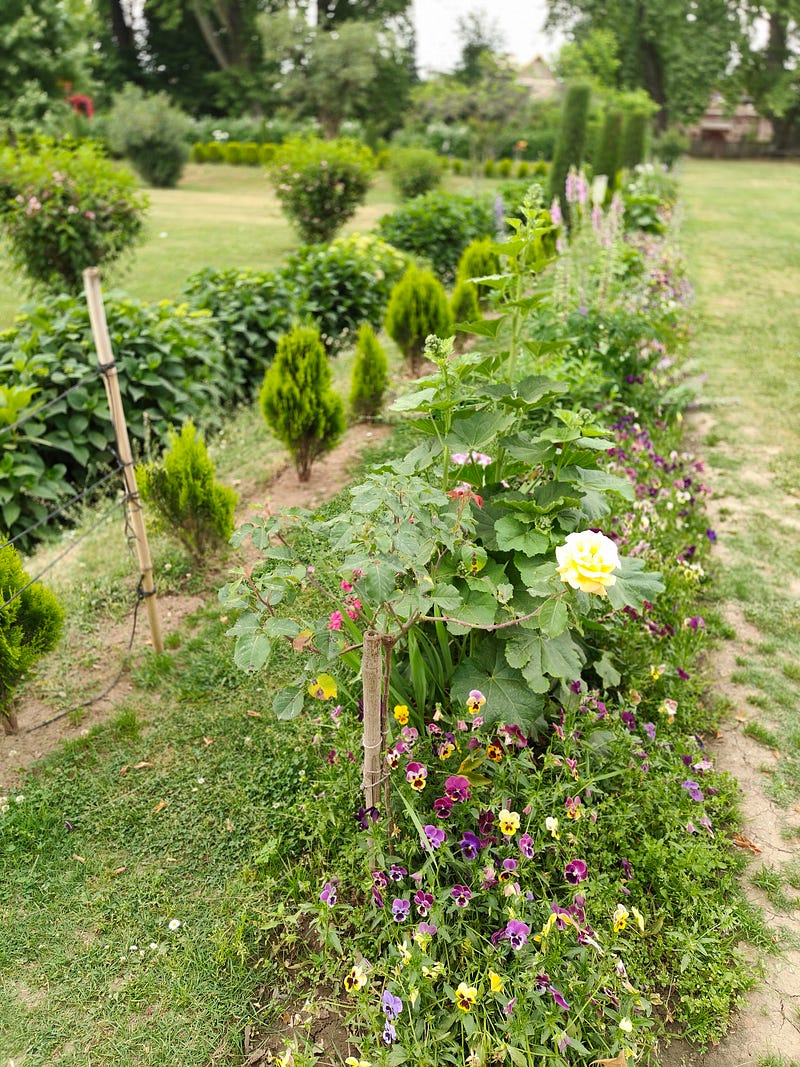
Agar Firdaus bar rōy-e zamin ast,hamin ast-o hamin ast-o hamin ast-If there is a paradise on earth, It is this, it is this, it is this.
The recent edition of the daily news once again brought attention to the situation in Kashmir. It featured a conversation between the news reporter Rajdeep Sardesai and residents emphasising the upcoming election rallies. The locals were asked for their thoughts on the removal of Article 371 and the change in Kashmir’s status to a union territory.
The interview took place on the banks of Lake Dal, bringing back memories of my time in Kashmir. The news also covered the recent terrorist attacks in Baramulla. While the visuals were unsettling, the scenic beauty of the valley still resonated with us, evoking the feeling that heaven was right there in Kashmir, as quoted by the poet Amir Khusro.
I recalled our journey through Baramulla to Gulmarg, where our adventures led to some mishaps faced by the tourists with their horse rides and others. A few people were injured after falling off horses, and others became ill after eating at busy restaurants. While the hotel staff provided simple meals to aid recovery, we were able to empathise and provide medicines for some.
These setbacks made us anxious about continuing our trip to the next hill station Sonmarg and the beautiful Shalimar Nishat Gardens. We decided to be more cautious during the tour. We began our day after a quick breakfast at 8.00 am. Though we were tired we were excited to visit Sonmarg. We checked the weather and road conditions and carried the necessary medicines. We also decided to take regular breaks to rest our bodies.
We had found Gulmarg to be quite warm. As such we carried light jackets but as we were getting ready to board the bus, we heard that Sonmarg was cool with drizzles and storms. We had forgotten our umbrella in the hotel room. As a student, I learned about the Silk Road connecting the Kashmir valleys in Sonmarg. The word Sonmarg means “Golden Meadows.” We were told that the snow-covered mountains glistened like gold when the sunlight kissed the small yellow flowers on the hills. In ancient days, the Silk Road at Sonmarg was a gateway between Kashmir and Tibet. It also led to China, Ladakh, and other South Asian countries.

Sonmarg is around 2 hours away from Srinagar. After an hour’s drive, the place turned mesmerising with its green meadows, fields, and the river Sindh flowing on both sides of the road. As we sat spellbound, we marvelled at everything. Some tourists said that the river originated from the Amarnath caves a little ahead of Sonmarg. When the icecles and glaciers in the caves melted, it rushed downwards filling the valleys with crystal clear water. The huge boulders on the sides of the river were nature’s seats to sit and meditate upon nature, As our bus neared the hill station we saw the riverside spots getting busier and crowded with tourists. There were several roadside stalls selling refreshments and snacks. People were picnicking and enjoying the natural beauty of the river. We kept going as the driver felt that the main parking spot in the city would get crowded. We were lucky to get a parking spot in front of the snow-covered mountain glacier. Clear meadows and nature lined the hills. The road lining this spot was however crowded with mules and ponies. There was a mad rush of cars and small traveller buses and within minutes the huge parking space was full of people and vehicles.
A cab was needed to go sightseeing to places like Zero Point, Zojila Pass, Fishing Point etc. The Zero Point was a scenic spot for snow biking and skiing and the Zojila Pass was a dangerous road on the hills that led one to Leh. The Fishing Point was a beautiful lake amongst the snow-capped mountains and meadows. “We were given three hours to ourselves, and we decided to take a leisurely walk through the beautiful mountains instead of travelling to see the scenic spots.”

We strolled, chatted, and enjoyed the scenery. It was a peaceful and calming experience. We were near the Thajiwas Glacier and could see other Himalayan peaks under a clear blue sky amidst beautiful green meadows. The cab drivers kept following us, thinking we would need them, but we were not tired. A freelancer offered various tips for each photograph we took and kept urging us to get professionally photographed. We cherished every moment in the meadows and valleys and didn’t care much about getting photographed. It made me feel like I was in Switzerland, just like Heidi. The weather changed quickly at the place, sometimes sunny and sometimes drizzling. We were rewarded with a breathtaking view of the Glacier after reaching the top. When we passed through an Army area, we saw a sculpture of an Army personnel carrying a wounded brother figurine. We saw a lone tourist sitting on top, enjoying the view. He was old and seemed eager to talk to us. We waited a long time to sit and meditate on the beautiful rock reminding one of Vivekananda’s enlightenment. We enjoyed the peace and beauty of nature. It was the perfect way to spend the afternoon. We started climbing down when our tour guide called all of us back. It took us some time to reach the meadows close to the market road. The weather changed suddenly, and there was a dust storm, a strong one. We bent down and waited for the weather to grow better. When it seemed to be a strong one we quickly ran to the parking in search of our bus. As the windstorm turned into a thunderstorm, it began drizzling and was cool and pleasant.
We saw the other tourists shopping for shawls and Kashmiri kurtas when we reached our bus. The vendor was sitting on a makeshift platform near the bus in the parking area. The rain started to pour down heavily, and we hurried into the bus. The women stopped shopping and joined us inside. The vendor quickly gathered their chosen items and followed the ladies onto the bus.
The vendor had muddy shoes due to the sandy parking area. The bus owner shouted in Kashmiri, “Get down, do not dirty the bus.” The vendor pleaded, and the ladies made their purchases quickly. The vendor happily got off the bus, but the driver was concerned about the muddy streaks. However, we were stuck in the parking lot with the vehicles parked very close together, so there wasn’t much he could do. Thankfully, with his skilful driving and the help of locals, the driver managed to get us out of the parking area.
We didn’t have much time because we had a lunch reservation at a restaurant about two kilometres downhill. The restaurant was spacious and had ample parking. It was crowded with tourists, and although the food was hot, we hesitated to eat too much. We were given an hour to relax and stretch our tired limbs before heading to the Shalimar Gardens, built by Emperor Jahangir on the northern side of the Dal Lake, near Srinagar.

I heard about Shalimar and Nishat Gardens when I was eight years old. My teacher explained each part of the garden so well that after decades when I visited Kashmir, I could still relate to it. We didn’t have a projector, phone, or pictures back then, but my teacher’s vivid descriptions allowed us to imagine all the beautiful aspects of the garden. Shalimar was a terraced garden built for Begum Noor Jahan in the 16th century and was called Farah Baksh, meaning “the delightful one.” The garden was adorned with rows of huge Chinnar trees and beautiful roses and flowers of all colours. It also featured arched niches behind the waterfalls that used to be lit up in the olden days but were now filled with flowering plants. Connecting to Dal Lake, the garden’s waterworks included sprinklers that added elegance and beauty. The entire garden was crisscrossed with walkways supported by trellises. The beauty and gentleness of nature filled our souls as we returned to our hotel in a trance. The garden was a reminder of the beauty of nature and how humans can coexist with it in harmony.
Comments
Post a Comment